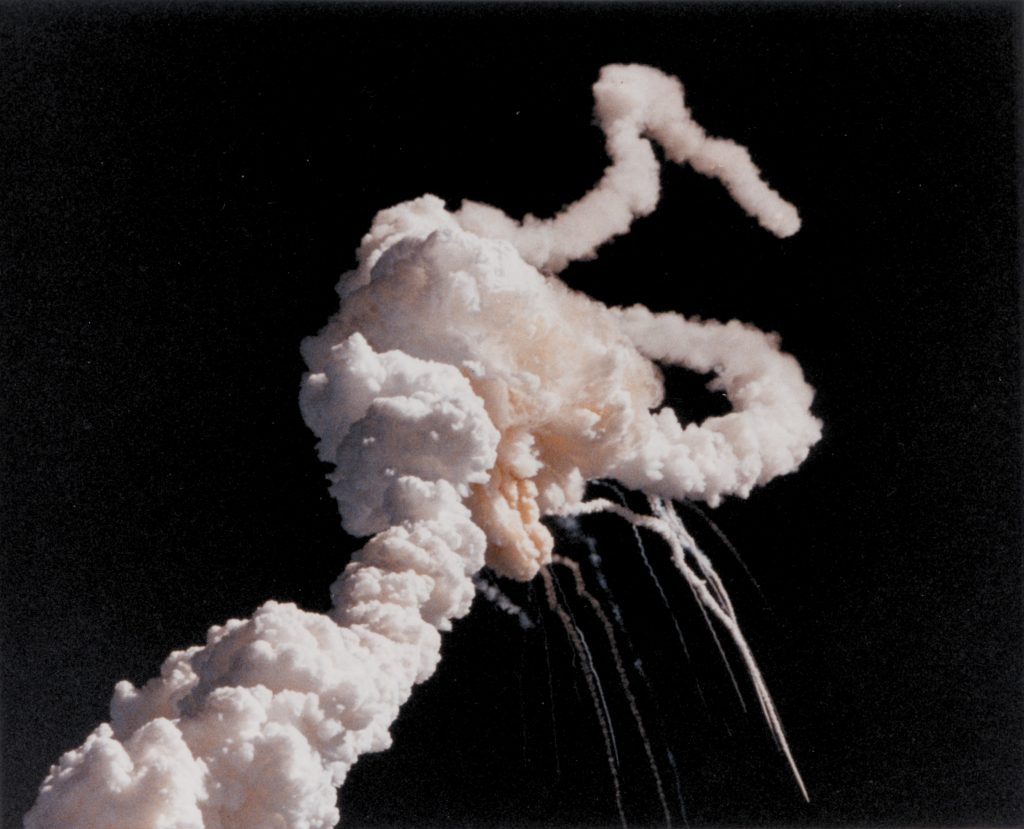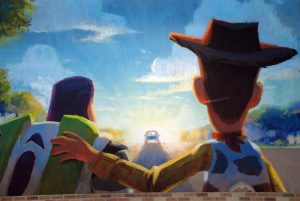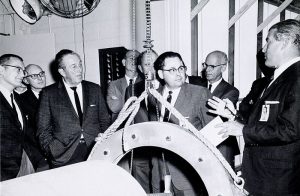On the evening of January 27th, 1986, an engineer at a little-known company told his wife, “It’s going to blow up.” That man was Bob Ebeling, an engineer for Morton Thiokol, which had been contracted to manufacture and maintain the solid rocket booster (SRB) used by NASA’s space shuttle program. On that night, he and his coworkers tirelessly pleaded with NASA officials to delay the launch of the space shuttle Challenger until temperatures were more favorable. Sadly, NASA officials did not heed these warnings, and all seven crew members of STS 51-L lost their lives.1
This story starts before that tragic day with the creation of the space shuttle program. As you can imagine, any vehicle designed for space undergoes rigorous testing and analysis before being put into use. During these early tests, engineers at the Marshall Space Flight Center saw a potentially catastrophic flaw in the two o-ring design that the SRB used in its joints and reported their concerns to NASA in 1971. NASA disregarded these concerns and did not pass this report onto Morton Thiokol for further evaluation. NASA approved the shuttle program and put the shuttles into production. By the second shuttle mission, there was serious evidence that supported the original concerns for the SRB o-ring failure. The evidence continued to stack up with each subsequent mission. In 1985 Morton Thiokol decided to redesign the joint to include an additional three inches of steel, which would grip the inner face of the joint and prevent it from rotating and potentially failing. Both NASA and Morton Thiokol agreed to continue with the launch schedule while they worked on this fix and accepted the potential for failure as an acceptable flight risk.2
Despite this risk, no shuttle had ever suffered a catastrophic failure during launch, orbit, re-entry, and no crew member had ever been injured or killed during a mission. The Challenger had already completed nine successful missions at this point and future missions were continuously being planned. This perfect record was a point of pride for NASA, and confidence continued to grow. This confidence caused NASA to be overly optimistic in their promise of how cost effective and efficient the shuttle program could be. These promises resulted in immense pressure from the government and tax payers to deliver on their promises with an overly ambitious launch schedule.3
The launch of STS 51-L had been planned as the first launch of 1986, and it would also put the first teacher in space. The addition of Christa McAuliffe, an elementary school teacher from New Hampshire, to the mission had garnered national and international attention. The launch was scheduled for January 22, 1986, but due to the delay of other missions, the launch of 51-L was pushed back several times — first to January 23rd, then to the 24th, 25th, 26th, and finally the 27th. On the morning of the 27th during regular countdown procedures, a micro switch indicated a failure of an exterior hatch-locking mechanism. By the time this issue was fixed, the winds had exceeded launch criteria. The launch was delayed yet again.4

Managers at Morton Thiokol had been watching the delays from their headquarters in Utah and were tracking the conditions with each delay. On the evening of the 27th, they saw the temperature would be below freezing at the launch site the next morning, which presented potential problems, raising concern. The shuttle and SRB had never been certified to operate in temperatures that low. Bob Ebeling had written an official memo for NASA titled “Help!” in 1985 where he described the extremely high potential for both o-rings to fail in temperatures below 40°F, but NASA had ignored it. That evening a manager at Morton Thiokol called Ebeling to ask if the shuttle could launch the following morning in the freezing temperatures. When Ebeling informed them of the extreme risk, they immediately started crunching the numbers and building their argument for the delay of the launch. Morton Thiokol and NASA held a teleconference. NASA opposed all arguments for a delay, and stated that if one o-ring failed there was a secondary mechanism that would stop a catastrophic failure from happening. Morton Thiokol engineers continued to explain that was an incorrect assumption that would surely lead to disaster. Sadly, NASA officials disagreed, and a second teleconference was scheduled. Except this time, the Morton Thiokol engineers were excluded, only management from NASA and Morton Thiokol were included. In this second call Morton Thiokol management disregarded the warnings of their own engineers and recommended that the launch proceed as scheduled.5

At 11:38AM on January 28th, 1986, STS 51-L launched from Cape Canaveral, Florida. On board were seven crew members: Francis Scobee, Michael Smith, Ronald McNair, Ellison Onizuka, Judith Resnik, Gregory Jarvis and Christa McAuliffe. At 11:39:13AM, just 73 seconds after launch, the space shuttle Challenger broke apart at an altitude of 14,000 meters. All crew members were killed when their cabin plummeted into the Atlantic Ocean three minutes after the break up.6
This disaster led to the immediate grounding of all shuttle missions. President Reagan convened a commission, called the Rogers Commission, to investigate the Challenger disaster. The results of the investigation showed the mechanical cause of the break up was a failure in both o-ring seals, which led to catastrophic structural failure. The report more importantly considered the contributing causes of the accident. It concluded that both NASA and Morton Thiokol failed to respond adequately to the potential danger of the SRB design, and instead of taking immediate action they accepted it as a flight risk. It also uncovered the large disconnect between management and engineers, which led to people who didn’t truly understand the science and math making a decision that was based on pride instead of fact.7

These tragic events unfolded more than three decades ago but are relevant today more than ever. The first private civilian space mission is rapidly approaching, and as it draws closer, we have to look closely at our past mistakes. If we don’t we are destined to repeat them. The millions who watched these events unfold have not forgotten how horrified they were, and they also remember how much the nation was shaken from this tragedy. Ebeling sums these feelings up best when describing how he feels looking back at what happened, “I could have done more. I should have done more.”8 We need to do our best to get everything right the first time, especially when failure equates to lives lost. We need to continue to focus on this as space travel becomes more prevalent in our society, and like Morton Thiokol and NASA in the ’80s, we can’t value our pride more than human lives.
- Howard Berkes, “30 Years After Explosion, Challenger Engineer Still Blames Himself,” NPR, January 28, 2016, https://www.npr.org. ↵
- Wikipedia, 2018, s.v. “Space Shuttle Challenger Disaster,” https://en.wikipedia.org/wiki/Space_Shuttle_Challenger_disaster. ↵
- Howard Berkes, “30 Years After Explosion, Challenger Engineer Still Blames Himself,” NPR, January 28, 2016, https://www.npr.org. ↵
- Diane Vaughn, The Challenger Launch Decision: Risky Technology, Culture and Deviance at NASA, Enlarged Edition (Chicago, IL: University of Chicago Press, 2016), 1-3. ↵
- Wikipedia, 2018, s.v. “Space Shuttle Challenger Disaster,” https://en.wikipedia.org/wiki/Space_Shuttle_Challenger_disaster. ↵
- Funk & Wagnalls New World Encyclopedia, 2017, s.v. “Challenger Disaster.” ↵
- Wikipedia, 2018, s.v. “Space Shuttle Challenger Disaster,” https://en.wikipedia.org/wiki/Space_Shuttle_Challenger_disaster. ↵
- Howard Berkes, “30 Years After Explosion, Challenger Engineer Still Blames Himself,” NPR, January 28, 2016, https://www.npr.org. ↵



96 comments
Gabrien Gregory
This is a well-written article about a topic I always viewed as a simple tragedy. I did not know any of the information regarding the negligence. It is actually hard to believe NASA did not work harder to evaluate and follow the weather conditions and techincal issues. The author did a great job maintaining a balance between information and the emotional element. The author pointing out the proximity to the civilian-run space programs of today make one think more carefully about what precautions must be taken as the country goes forward in exploration.
Kaitlyn Killebrew
I like how NASA’S “overly optimistic” from a few trials was worth superseding the engineer’s pleas when he told them not to launch because he knew it wasn’t going to work, please note the sarcasm. NASA has made an astronomical error with their carelessness. My mom had told me about the launch with the teacher and it was between her teacher, Mrs.Moore and Christa McAuliffe, and Christa ended up being chosen. The video of the launch had horrified her and she described it as “we didn’t really understand what we had just seen” and that it was “unreal”.
Ariana Melendez
“HOUSTON, WE HAVE A PROBLEM” is the best way to describe NASA’s despicable decision that was based on pride rather than factual evidence. It is very shameful that they acted in such an unprofessional manner, considering that seven people’s lives were at risk. It is sad to know that the engineers were excluded from an important meeting regarding the shuttle launch, because they were the only knowledgable ones about the situation. I am really hoping NASA has learned from the past and that they will take all the precautions necessary to ensure safety.
Rylie Kieny
I like many others have heard of this tragic event but I never knew of the warning signs. Before reading this article I was sad to hear the story but now when I hear it I feel thoughts of anger. Anger in knowing that NASA was warned by engineers , people who were experts on rocket, and payed the warnings no attention. 7 people lost their lives that day which could have been possibly avoided had people listened to the warning signs. Its disappointing that NASA clearly did not put the lives of those on that shuttle first.
William Rittenhouse
This was a terrible act of negligence which led to the death of 5 great people. In my opinion this is involuntary manslaughter. Your taking chances with other peoples lives that you don’t get to have a say in in their fate. Too bad NASA didn’t get the memo. I think if they would of delayed the launch they would of been alive and history would of been recorded that day. It’s a shame that this event happened the way it did. Hopefully history won’t repeat itself.
Angel Torres
The disaster of the Space Shuttle Challenger is a tragedy that will be remembered throughout history and hopefully one people can learn from. I find it hard to grasp that engineers reported their concerns about the o-ring design and NASA failed to act on the reports from the engineers. The takeaway from the article is that disconnected relationship between engineers and management that can be transgressed to more abstract everyday situations. Well written and interesting article.
Megan Copeland
I have heard about this story before, and it is so crazy to think about how those seven brave astronauts lost their lives that day. I believe it is very important for NASA to be one hundred percent sure there will be no problems with the machinery, because people’s lives are at stake. I am glad that after this tragic accident, President Ronald Reagan grounded all of the other missions to make sure that this does not happen again.
Irene Astran
We were ambitious about this mission so much so that it led for us to gamble with people’s lives. This is the ultimate wrongdoing, knowing that the mission will fail in some aspect and relying on a secondary concoction to bear the weight of the success of that launch. I would hope that NASA was reprimanded by the public after hearing of this. I hope they do not try this again in the future, no matter how anticipated the mission may be.
Sienna Guerra
This article made me realize the tragedy of this accident. It is truly sad to see how seven lives were lost due NASA and Morton Thiokol’s negligence. These are 7 people that never got a chance to see their families again because of the lack of training. This was a very interesting article and an overall good read, congrats on being nominated for best use of images!
Rebecca Campos
This entire story is rather mortifying. The events that took place within this catastrophic flight seemed to be completely preventable, but yet they still happened. Red flags had already been raised about the potential issues that could take place with the if a single o-ring. Sadly, the ruling of the catastrophe ended up being caused by a faulty o-ring. The author presented this tragic story in a way for the readers to understand some of the more complex pieces of the story. NASA should have been more patient with the flight until it 100% safe for the astronauts to board and hopefully no more astronauts will die at the expense of an act of pride and impatience again.